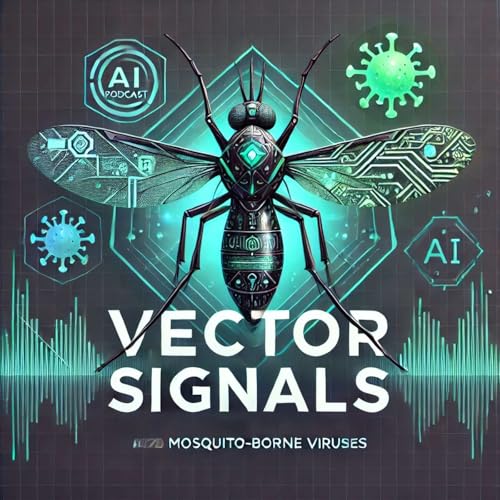Mosquito Diversity and Public Health Risk in Kerala, India: A Synthesis of a Multi-District SurveySource: Mathiarasan, L., Natarajan, R., Aswin, A. et al. Diversity and spatiotemporal distribution of mosquitoes (Diptera: Culicidae) with emphasis on disease vectors across agroecological areas of Kerala, India. Sci Rep 15, 30603 (2025). https://doi.org/10.1038/s41598-025-16357-yDate: Received - 29 May 2025 | Accepted - 14 August 2025 | Published - 20 August 2025Executive SummaryThis document synthesizes the findings of an extensive entomological survey conducted across five agroecological districts of Kerala, India. The research reveals a remarkably diverse mosquito fauna, identifying 108 species, including 14 known disease vectors, which underscores the region's complex public health challenges. The study highlights the overwhelming predominance of Stegomyia albopicta (54.82% of all collected specimens), a highly adaptable vector for dengue and chikungunya, posing a significant and ongoing threat.Key findings indicate that artificial, human-made habitats—such as discarded tires, plastic containers, and latex collection cups—are the primary breeding grounds, supporting greater species diversity than natural habitats and pointing to critical deficiencies in solid waste management. The Wayanad district was identified as a major biodiversity hotspot for mosquitoes, attributed to its unique ecological niches. The investigation also yielded significant scientific discoveries, including the description of a new species, Heizmannia rajagopalani, and the first regional records of several other species. The co-existence of multiple vectors for arboviruses, malaria, and filariasis creates a complex risk profile that necessitates comprehensive surveillance and targeted, ecologically-informed control strategies.1. Overview of the Entomological SurveyThe study was designed to conduct a comprehensive assessment of mosquito biodiversity, spatiotemporal distribution, and habitat preferences across diverse ecological settings in Kerala, India, a state known for its unique agro-geographical features and history of mosquito-borne disease (MBD) outbreaks.Objective: To evaluate mosquito species composition, spatial and temporal distribution, and ecological and habitat preferences to inform public health risk assessment and vector control strategies.Scope and Duration: The survey was conducted from February 2016 to September 2017 in five districts selected for their varied ecotypes: Wayanad (forested, high altitude) Ernakulam (coastal, plantation) Pathanamthitta (Western Ghats, plantation) Idukki (mountainous, tea cultivation) Thiruvananthapuram (capital, urban/rural/coastal) Methodology: The research employed a dual sampling approach, collecting both immature (larvae, pupae) and adult mosquitoes. Immature specimens were collected from 777 habitats, while 4,021 adult mosquitoes were collected from 422 sites. Species were identified using standard morphological and taxonomic keys.Total Collection: A total of 12,535 mosquito specimens were collected and identified.2. Species Composition and AbundanceThe survey revealed a rich and diverse mosquito fauna, highlighting a complex ecosystem of both nuisance species and medically important vectors.Overall DiversityA total of 108 mosquito species belonging to 28 genera were identified. The genus Culex exhibited the highest species richness (25.0%), followed by Anopheles (12.9%) and Stegomyia (10.2%).Dominant SpeciesThe vast majority of collected specimens were dominated by a few highly prevalent species: | Species | Percentage of Total Collection | Known Significance | Stegomyia albopicta | 54.82% | Primary vector for dengue, chikungunya, Zika | Culex quinquefasciatus | 6.92% | Vector for lymphatic filariasis | Hulecoeteomyia chrysolineata | 6.33% | Noted for diverse breeding patterns | Armigeres subalbatus | 5.03% | Nuisance mosquito, prefers polluted waterIdentified Disease VectorsThe study identified 14 known disease vector species, creating a multifaceted public health risk. The co-existence of primary and secondary vectors for various diseases complicates transmission dynamics.Arboviruses (Dengue, Chikungunya, Zika, Japanese Encephalitis): St. albopicta, St. aegypti, Fredwardsius vittatus, Cx. tritaeniorhynchus, Cx. bitaeniorhynchus, Cx. gelidus, Cx. vishnui, Cx. pseudovishnui.Malaria: Anopheles stephensi, An. culicifacies (primary vectors), and An. varuna (secondary vector).Filariasis: Cx. quinquefasciatus, Mansonia uniformis, An. barbirostris.While St. albopicta was abundant, other primary vectors were found in extremely low numbers, such as St. aegypti(1.43%), An. stephensi (0.06%), and An. culicifacies (0.01%). However, the study emphasizes that even low-density vector populations can sustain pathogen transmission cycles and cause outbreaks under favorable conditions.3. Spatiotemporal Distribution and Biodiversity HotspotsThe distribution of mosquito species ...
続きを読む
一部表示
 11 分
11 分 13 分
13 分 13 分
13 分 14 分
14 分 19 分
19 分 2025/07/2914 分
2025/07/2914 分 16 分
16 分 17 分
17 分
